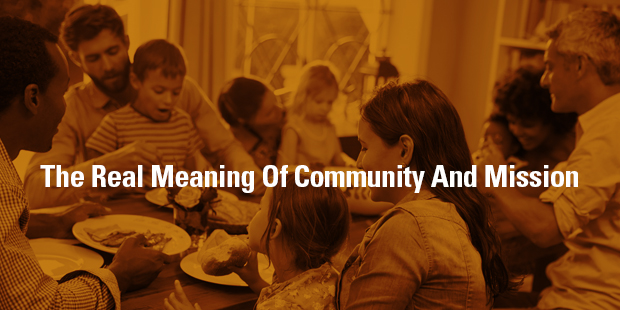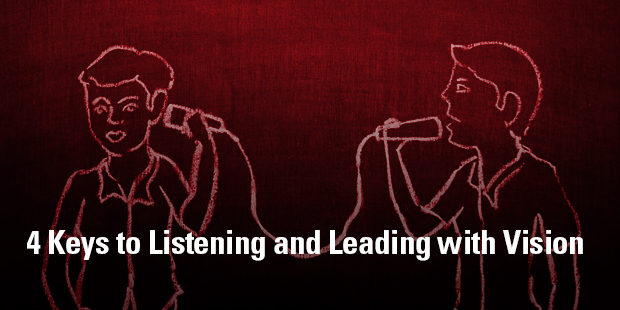You open the doors to your church every weekend hoping more people will come (or in some cases, hoping somebody comes) only to discover that, with few exceptions, more people rarely do.
It can get discouraging, and many leaders wring their hands over what to do and how to respond.
Even once-growing churches hit plateaus and stumble into decline, and we wonder why it’s so hard to gain traction.
One of the reasons so many churches struggle these days is that the way we do church is badly outdated.
Culture is changing rapidly, which means people are changing rapidly. If you want to reach people, that probably also means you need to change your approach rapidly.
That freaks out a lot of Christians who think that because the message never changes, nothing should change.
There’s a huge difference between changing the message and changing the method.
In the church’s case, the historic message doesn’t change. But the methods have to.
Here’s why: if you don’t change your methods, eventually no one will hear your message.
I have a sinking feeling if we sat down with young adults and asked them why we do things the way we do, we’d hear an earful.
As the pace of change accelerates around us with every passing month, here are 5 ways the way we do church appears ever-more outdated.
1. Making People Go To Church
As I outlined in my 2018 church trends post, the idea of only doing church in a ‘box’ on Sundays is an increasingly stale idea.
In the (very near) future, people won’t go to church. The church will go to people.
Not sure what that means?
Think about how much your life has changed in the last 15 years.
Quick example: Let’s say I want to buy a specific wooden monitor stand for my iMac (which I do). I have two options.
Option 1: Traipse to store after store looking for what feels like a needle in a haystack (I want a walnut one), realizing, in the end, I likely need to go to Toronto or some major city to find one that a) I like, b) fits my particular computer and c) is in my price range. (Not factoring in, of course, a lot of phone calls, a day of lost travel time and tons of gas money).
Option 2: Browse Amazon and Etsy from my phone, order the monitor and have it shipped to my house next day.
Which would you choose?
Exactly.
Despite a welcome and thoughtful backlash against technology and what it’s doing to our minds (and souls), the internet is still not going away anytime soon.
There was a day when going to church was the only option you had if you wanted to be part of a local church.
A century or more ago, you lived in a village or city or on a farm, and you made the trek into town or over a few blocks to hear the local preacher. It was also a chance to connect relationally and socially. Honestly, for many people a century ago it was a highlight of their week.
The car gave people mobility, so we created bigger suburban churches to which people drove.
As a result, our entire model for the last century or more has been built on people going to church as though it was a destination and physical place.
But back up the timeline earlier than that, and you realize that the church going to people is not that innovative. Entire denominations and movements were premised on bringing the church to people (think circuit preachers or even the Apostle Paul).
Now, of course, we have the internet. Which most church leaders still seem to ignore as a serious tool for ministry.
So many churches remain stuck in the idea that the only way you can access the Gospel is to come to our building at a set hour every week.
Want access beyond that? Not sure how to help you.
Too many churches operate an analog model in a digital world.
Churches that want to reach people will bring the church to people, through:
A great social media presence
Messages available anytime, anywhere in multiple formats (web, social, podcast)
In-home gatherings
Practical help/advice/encouragement for everyday life (like the ParentCue strategy and the ParentCue app)
Partnerships in the community with other organizations that are making a difference (which not only does good, but takes you out of your box and into where the people you’re trying to reach gather)
Ironically, when churches begin to go to people, it makes people also want to go to church.
Because you went to them, they will want to come to you.
It creates a reciprocal, daily relationship. Whatever you do during the week builds on what happened on the weekend. And whatever you do on the weekend built on what happened during the week.
But most churches still only want people to come to them. That clock is ticking…fast.
2. Separating The Analogue And Digital Worlds
If 2018 is the year where (finally) the digital becomes real for church leaders, the question becomes what to do with it.
Strangely, most churches still separate what they do digitally and what they do in the real world.
Most of us weave seamlessly between our digital and real lives, texting someone one minute and sitting down for coffee with them the next, emailing someone to follow up on the meeting we just had, and video chatting someone we’re hanging out with Friday night.
Too many church leaders still think of their:
- Email list as a ‘newsletter’
- Social media as an announcement and PR venue
- The physical world as the ‘real thing’
You know what the digital world is? It’s relationship.
It’s a friendship. And like all good friendships, it doesn’t fit in a programmatic box.
Our guest services team at Connexus has noticed a huge shift in the last year where almost everyone who visits us in person has watched online for weeks or months before they set foot in a building.
I go to parties and people who never set foot in a church tell me they watch my messages online.
They don’t see it as separate.
Church leaders who do, lose.
Conversely, leaders who see the analog/digital life as seamless will be in much a better position to reach people who live like it’s seamless, because it is.
3. Ignoring True Community
Is there any irony in the digital explosion around us? Of course there is.
The more connected we become, the more disconnected we feel.
The church should embrace technology as a way to connect, but also realize that as people connect more digitally, they feel increasingly isolated and removed from each other.
What people hunger for most is community. And no one should be better at community than the local church.
The challenge, of course, is that we’re not all that great at community.
Too often our ‘fellowship’ is shallow, or we fight a lot.
What’s missing in far too many churches is love. The very thing for which we should be known.
Churches that become great at cultivating true community will have a long line of people wanting to be part of it.
4. Creating A 100% Downloadable Or Forgettable Experience
I outline the problem with downloadable church services in this post, but let’s drill down a more.
Yes, the church will become more digital, more location independent, more remote. Sermons can be consumed on a run, on a commute and while cooking dinner. I get that. That’s a good thing. You should be able to download snippets of what your church does so you can be present in peoples lives.
But you need to facilitate experiences that go beyond that.
If your entire church experience is 100% downloadable, why would you gather? It’s often in the gathering when people move beyond themselves and experience something transcendent and life-changing.
Ironically, the constant consumption of content leaves people hungering for greater community, greater experience and greater transcendence.
Churches that facilitate those kinds of experiences are seeing momentum. Churches that don’t find it far harder to gain momentum.
I realize this creates a sea of questions for some people.
One of the best questions you can ask as a church leader is “If people show up on a Sunday, have we left enough room for them to encounter God?” That can be done through music, through prayer, through silence and even through the way you preach. It’s a posture as much as it’s programming.
Too often, people show up at church hoping to find God. Instead, they find us.
Don’t let people show up to your church only to find you.
This is one of the highest value points of a church that gathers: you share in something far bigger and far better than any of us and all of us.
5. Being Mediocre
One of the challenges most leaders face is trying to do a great ministry on limited resources.
Since we’re all hyper-connected, it means many churches try to imitate larger churches in what they do, often with limited success.
While you just don’t have the talent, skill or ability to pull off what a church 10 or 100x your size does, that doesn’t stop many from trying.
The result is usually mediocrity.
Years ago Jim Collins asked a great question that should still haunt every leader: what can you be best in the world at?
How would you answer that?
Just because you can’t be great at everything doesn’t mean you can’t be great at anything.
The key is to isolate the principles or points that resonate most.
You may not be the best preacher in the world, but what aspect of your preaching connects best?
Your stories?
The way you make the complex simple?
How you handle scripture?
Your relatability?
The personal connection you create with your audience?
Discover what connects best and develop that.
Musically, you may not have a great band…but do you have a
Fantastic vocalist?
Great keyboardist?
Solid guitar player?
Good DJ?
Focus on what makes you great.
And no, you don’t have an unlimited budget, but meaningful connection with other people is free. So is kindness. So is hope.
Stop being mediocre at everything.
Pick a lane, and go deep.
You can branch out from there.
In an age where people create amazing art, design, products and services from home-based businesses, mediocrity is no longer an effective strategy.
What Do You See?
What parts of our model of doing church do you see as being outdated?
Anything you’d love to change?
Read more from Carey.

Tags: Carey Nieuwhof, Change, outdated church
|
What is MyVisionRoom? > | Back to Vision >
































